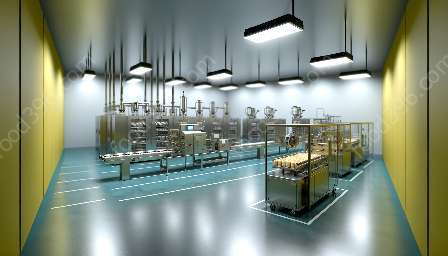In the world of food preservation and processing, innovations and techniques continue to play a crucial role in ensuring the safety and quality of our food supply. One such method that has garnered attention is food irradiation, a process that involves using ionizing radiation to improve the safety and shelf life of food products.
The Basics of Food Irradiation
Food irradiation is a technology that has been used for several decades to extend the shelf life of certain food products while reducing the risk of foodborne illnesses. The process involves exposing food to a controlled amount of ionizing radiation, such as gamma rays, electron beams, or X-rays. This exposure disrupts the DNA and cellular structure of microorganisms, insects, and parasites that may be present in the food, effectively eliminating or reducing their ability to cause spoilage or disease.
It's important to note that food irradiation does not make the food radioactive, as the energy used in the process is not strong enough to make the food itself radioactive. Instead, it targets the potential sources of contamination, making the food safer for consumption without compromising its nutritional value or sensory characteristics.
Food Irradiation in Action
Food irradiation can be applied to a wide range of food products, including fruits, vegetables, spices, grains, meat, and poultry. By subjecting these items to irradiation, the process can effectively control pathogens such as E. coli, Salmonella, and Listeria, which are commonly associated with foodborne illnesses. In addition, it can also inhibit the sprouting of potatoes and onions, as well as the ripening of fruits, leading to extended shelf life and reduced food waste.
Moreover, food irradiation reduces the need for chemical fumigants and preservatives, offering a more environmentally friendly and sustainable approach to food preservation. This aligns with the growing consumer demands for clean-label products and sustainable food practices.
The Role of Food Irradiation in the Food and Drink Industry
As the food and drink industry continues to prioritize food safety and quality, food irradiation has emerged as a valuable tool in achieving these goals. By incorporating irradiation into food processing and preservation practices, companies can enhance the safety and shelf life of their products, ultimately reducing the risk of foodborne illnesses and improving consumer confidence.
Furthermore, the use of food irradiation can facilitate international trade by meeting strict phytosanitary requirements and ensuring that food products comply with regulations related to food safety. This is particularly important for global supply chains, where maintaining the integrity and safety of food products during transportation and storage is essential.
From a consumer standpoint, understanding the science and benefits of food irradiation is crucial in promoting informed decision-making. By demystifying the process and highlighting its positive impact on food safety and quality, consumers can make more confident choices when it comes to the food they purchase and consume.
Conclusion
In conclusion, food irradiation stands as a proven method in the realm of food preservation and processing, offering numerous benefits in terms of safety, shelf life extension, and sustainability. As the industry continues to evolve, it's essential to embrace innovative approaches like food irradiation to ensure that the global food supply remains safe, reliable, and resilient. Through ongoing research and education, the potential of food irradiation can be fully realized, contributing to a more secure and sustainable food system for all.


















